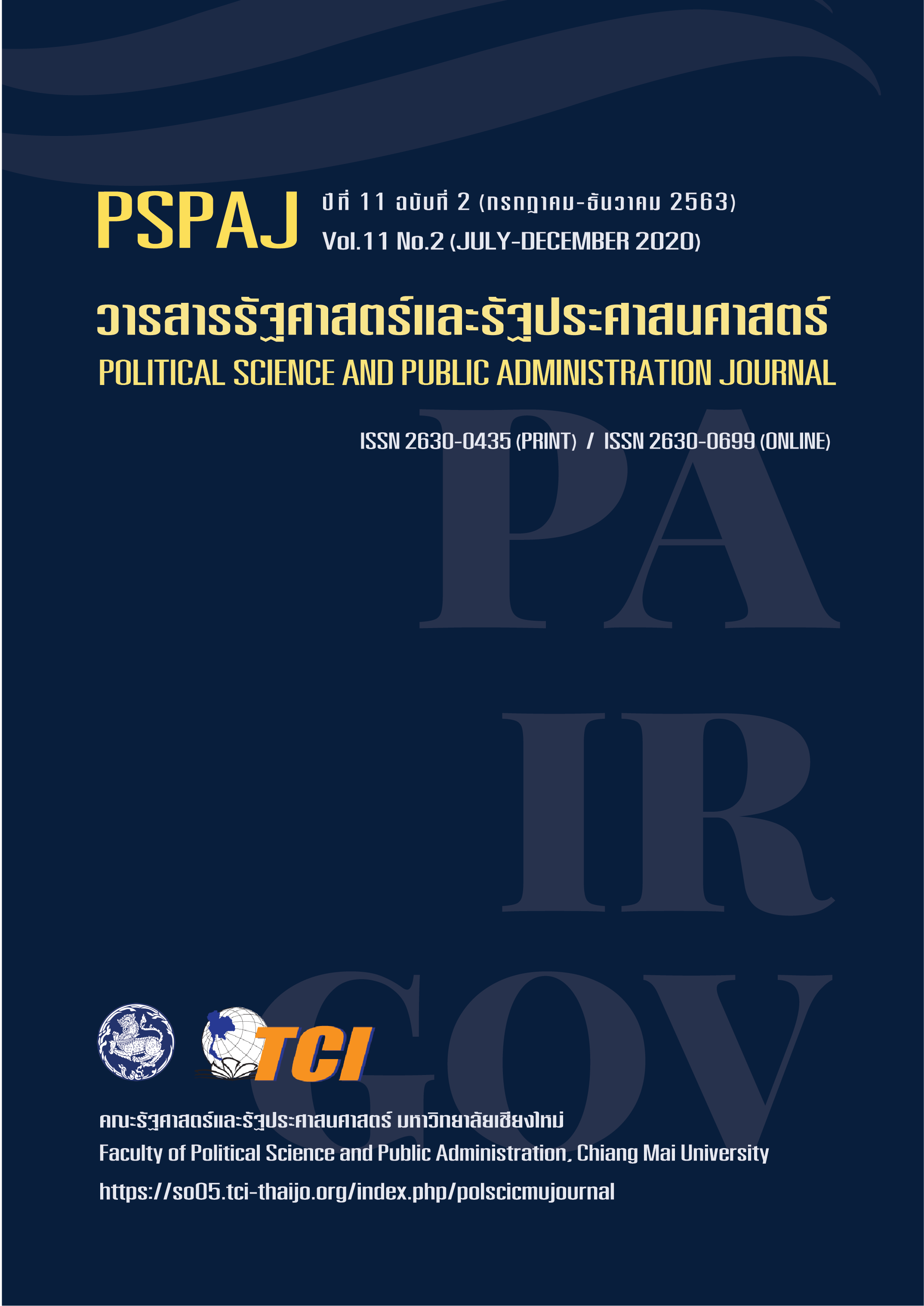Supply Chain Management in Social Enterprise: Case Studies of Lapato Coffee
Main Article Content
Abstract
The objectives of this study are: 1) to study the supply chain process in social enterprise, 2) to analyze the processing activities within the supply chain, and 3) to study the involvement of government sector, private sector, and civil society in processes of social enterprise operation. The study used a qualitative method. Data were collected by semi-structured interview method that consisted of 10 informants, including 4 sectors: entrepreneur, government sector, private sector and civil society involved with Lapato Coffee operation. The results of this study showed that: First, Lapato Coffee supply chain consisted of sourcing process between tier 4 and tier 1 while its making and delivering processes are both at tier 1. Moreover, the entrepreneur as core process of Supply Chain was inefficient. Second, there was interconnection among people in all activities of supply chain which makes the maturity level of Lapato Coffee supply chain rated in participation level 3 (Linked). Third, government sector, private sector and civil society were outstanding with the sourcing process.
Article Details
- เนื้อหาและข้อมูลที่ลงตีพิมพ์ในวารสารรัฐศาสตร์และรัฐประศาสนศาสตร์ถือเป็นข้อคิดเห็นและความรับผิดชอบของผู้เขียนบทความโดยตรง ซึ่งกองบรรณาธิการวารสารรัฐศาสตร์และรัฐประศาสนศาสตร์ ไม่จำเป็นต้องเห็นด้วย หรือร่วมรับผิดชอบใดๆ
- บทความและข้อมูล ที่ได้รับการตีพิมพ์ในวารสารรัฐศาสตร์และรัฐประศาสนศาสตร์ ถือเป็นลิขสิทธิ์ของวารสาร หากบุคคลหรือหน่วยงานใดต้องการนำข้อมูลไปใช้ประโยชน์ในทางวิชาการ ขอให้อ้างอิงแหล่งที่มาด้วย
References
กรมพัฒนาสังคมและสวัสดิการ. (2561). พม. ดึงภาคธุรกิจขับเคลื่อนกิจกรรมเพื่อสังคม Social Enterprise: SE มุ่งบูรณางานพัฒนาสังคมอย่างยั่งยืน. สืบค้นเมื่อ 4 พฤศจิกายน 2561, จาก https://gnews.apps.go.th/news?news=21282
ทวีศักดิ์ เทพพิทักษ์. (2554). การจัดการโลจิสติกส์และซัพพลายเชน. กรุงเทพฯ: บริษัท ออฟเซ็ทพลัส จำกัด.
เรวัต ตันตยานนท์. (2560). ธุรกิจเพื่อสังคมกับ สิทธิประโยชน์พิเศษจากรัฐ. สืบค้นเมื่อ 20 ธันวาคม 2561, จาก http://www.bangkokbiznews.com/blog/detail/642468
วธู โรจนวงศ์. (2559). การพัฒนาโมเดลสนับสนุนการดำเนินกิจการเพื่อสังคมในประเทศไทย. (วิทยานิพนธ์วิทยาศาสตรมหาบัณฑิต), มหาวิทยาลัยธรรมศาสตร์.
วิทยา สุหฤทดำรง. (2546). โลจิสติกส์ และการจัดการโซ่อุปทาน อธิบายได้...ง่ายนิดเดียว. กรุงเทพฯ: ซีเอ็ดยูเคชั่น.
สุธี วรประดิษฐ. (2553). การมีส่วนร่วมของชุมชนงานสารสนเทศสำนักงานส่งเสริมการศึกษานอก ระบบและการศึกษาตามอัธยาศัยจังหวัดตราด. ตราด: สำนักงานการศึกษานอกระบบและการศึกษาตามอัธยาศัย จังหวัดตราด.
เอกชัย นิตยาเกษตรวัฒน์. (2560). โครงการวิจัยเรื่องการพัฒนากิจการเพื่อสังคม: กรณีศึกษาที่ประสบความสำเร็จในต่างประเทศและการประยุกต์ใช้ในประเทศไทย. NIDA Business Journal. สืบค้นเมื่อ 4 พฤศจิกายน 2561, จาก http://mba.nida.ac.th/th/
สาขาวิชาวิทยาการจัดการ มหาวิทยาลัยสุโขทัยธรรมาธิราช. (2554). การจัดการช่องทางการตลาดและห่วงโซ่อุปทาน. นนทบุรี: สำนักพิมพ์มหาวิทยาลัยสุโขทัยธรรมาธิราช.
Chandra, C., & Kumar, S. (2001). Enterprise Architectural Framework for Supply-chain Integration. Industrial Management & Data Systems, 101(6), 290-304.
Lockamy III, A., & McCormack, K. (2004). The Development of a Aupply Chain Management Process Maturity Model Using the Concepts of Business Process Orientation. Supply Chain Management: An International Journal, 9(4), 272-278.
Scott, C., & Westbrook, R. (1991). New Strategic Tools for Supply Chain Management. International Journal of Physical Distribution & Logistics Management, 21(1), 23-33.
Supply Chain Council. (2012). Supply Chain Operation Reference Model Revision 11.0. Washington, D.C.: APICS.


